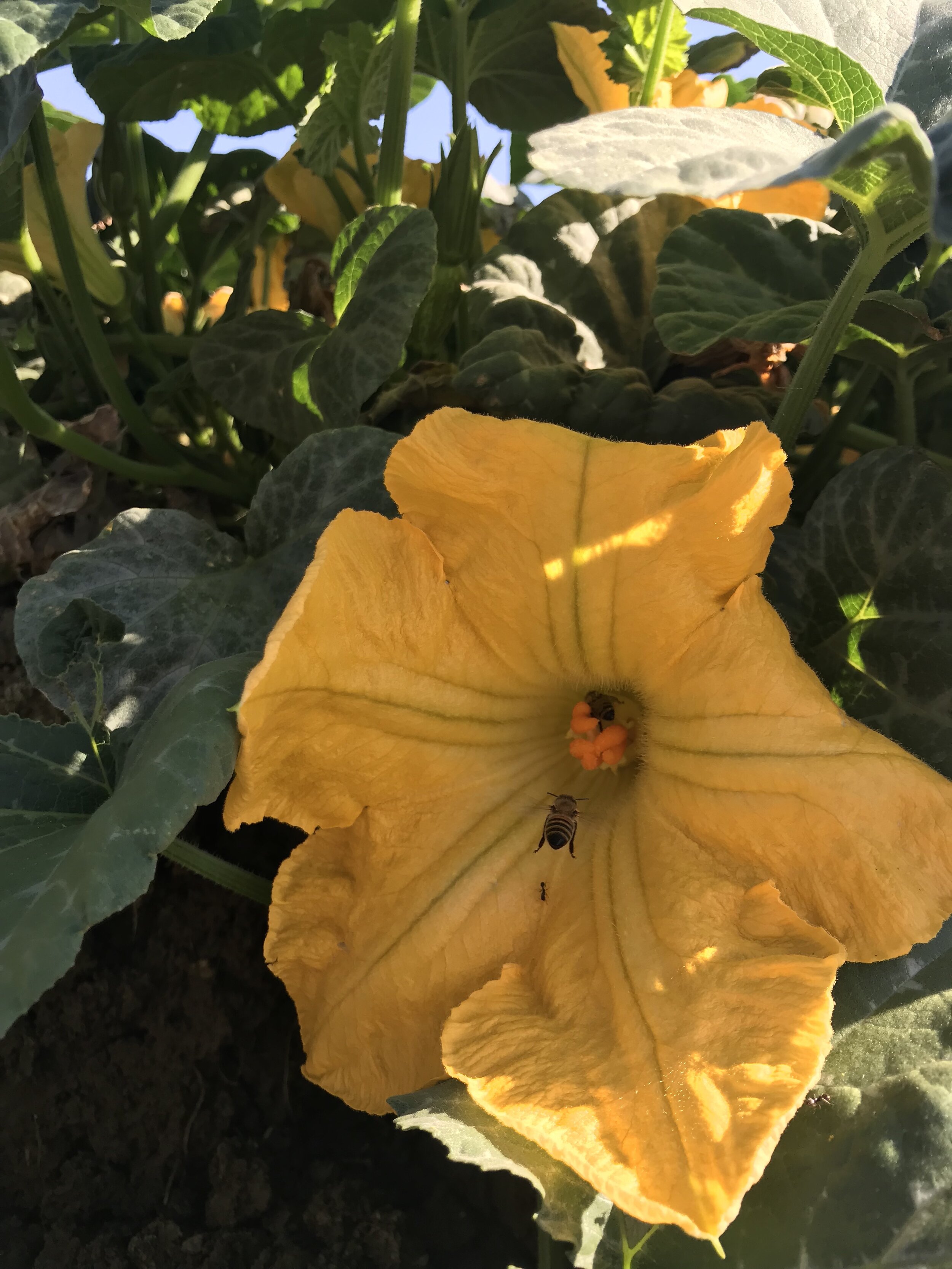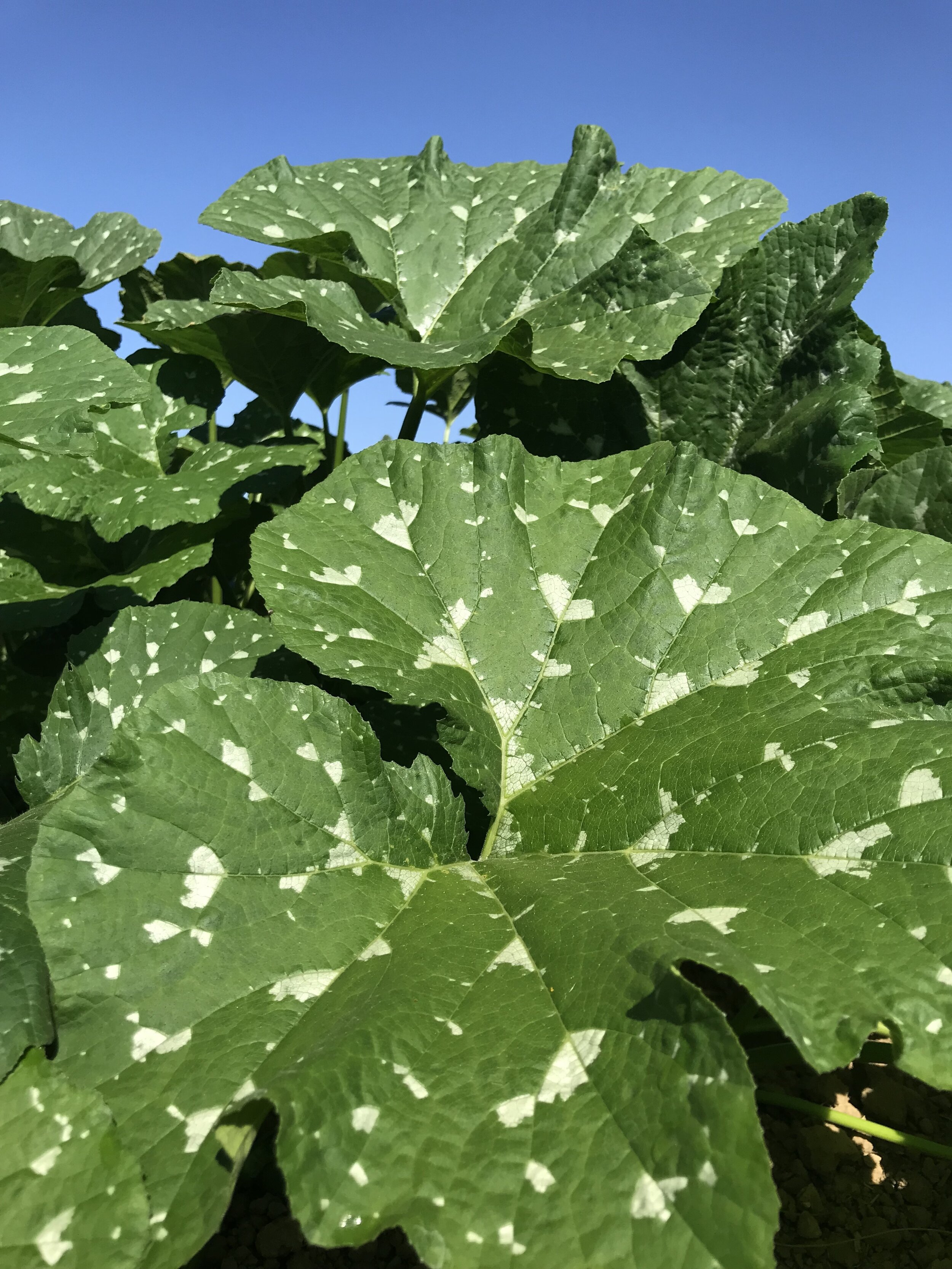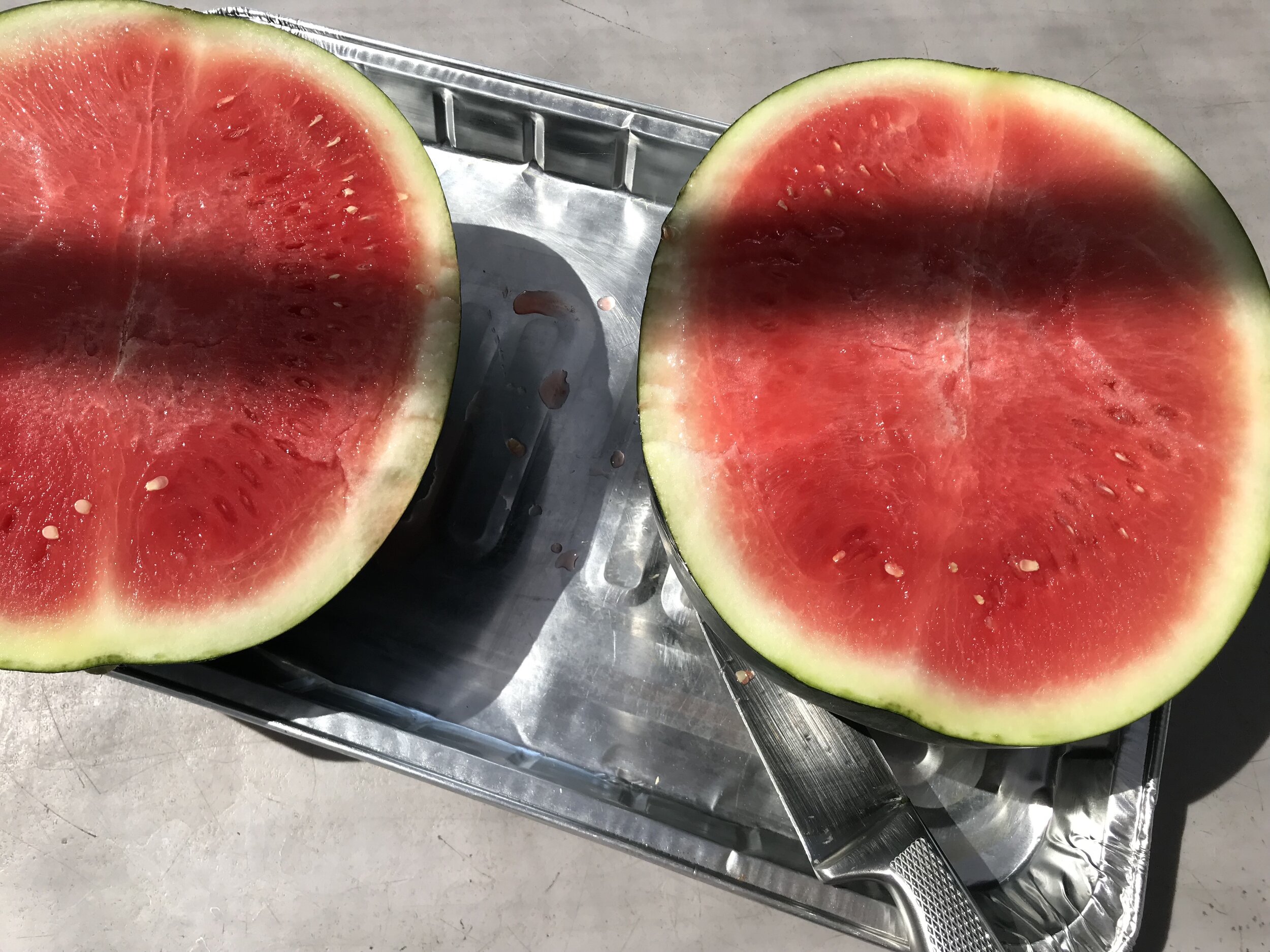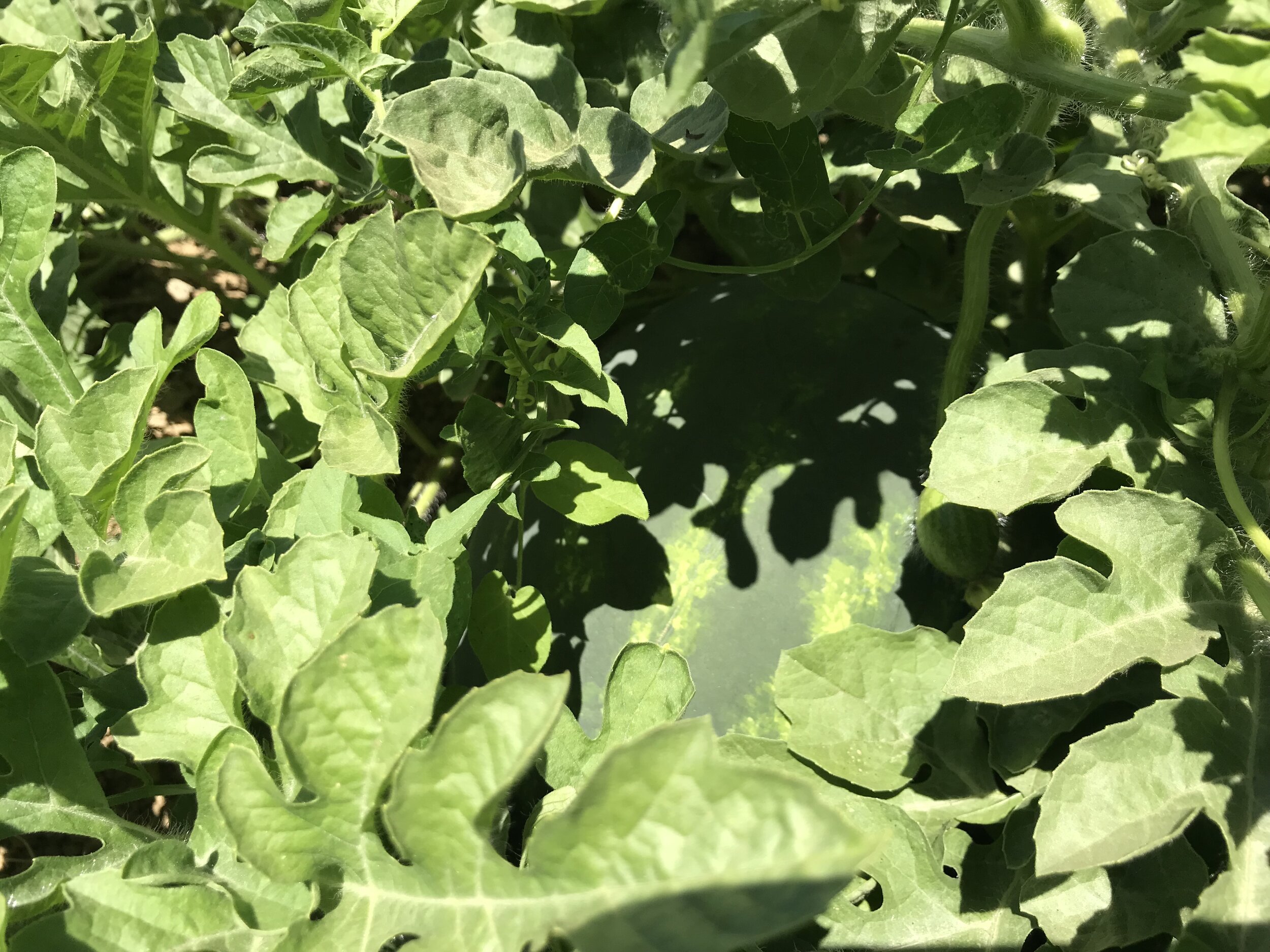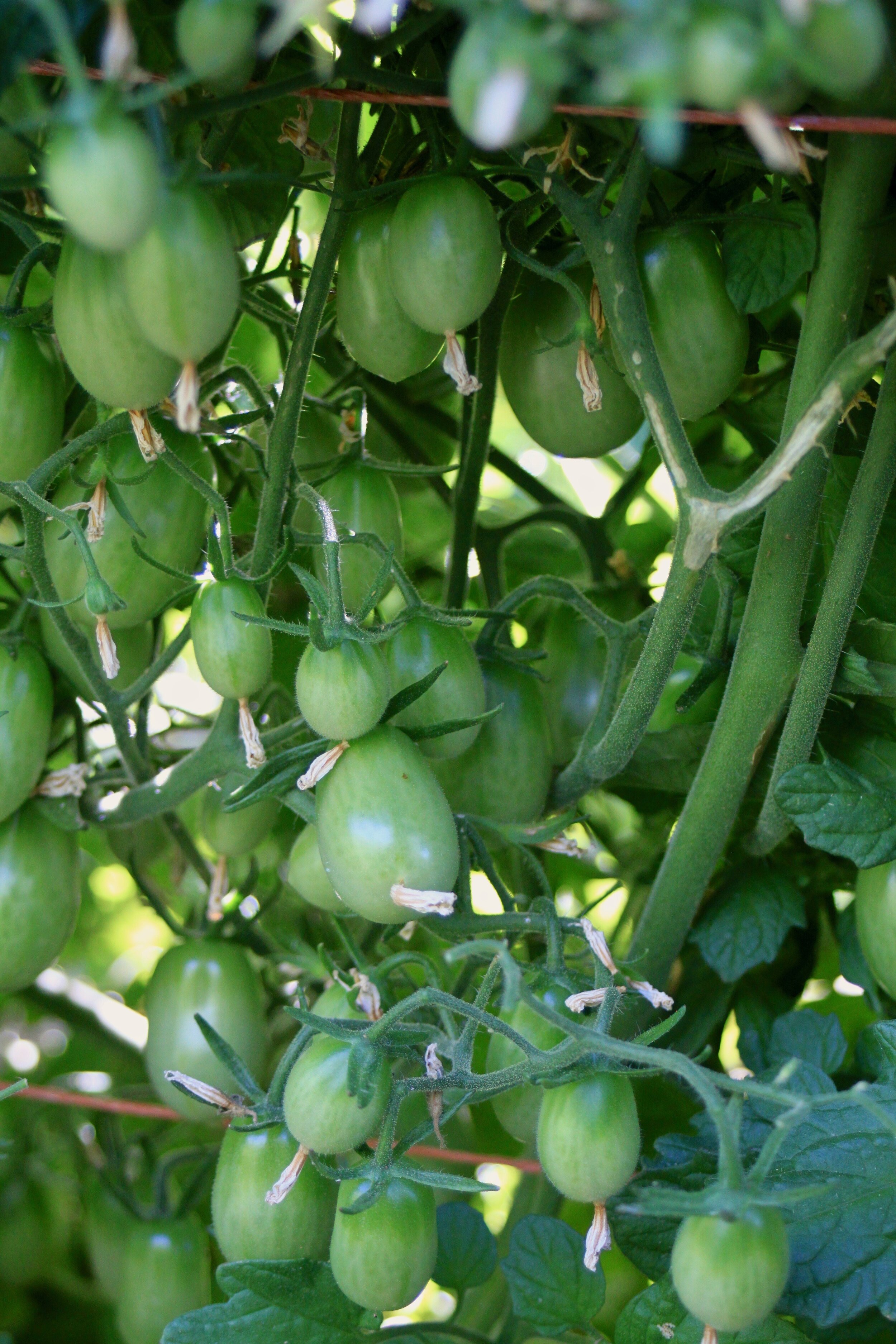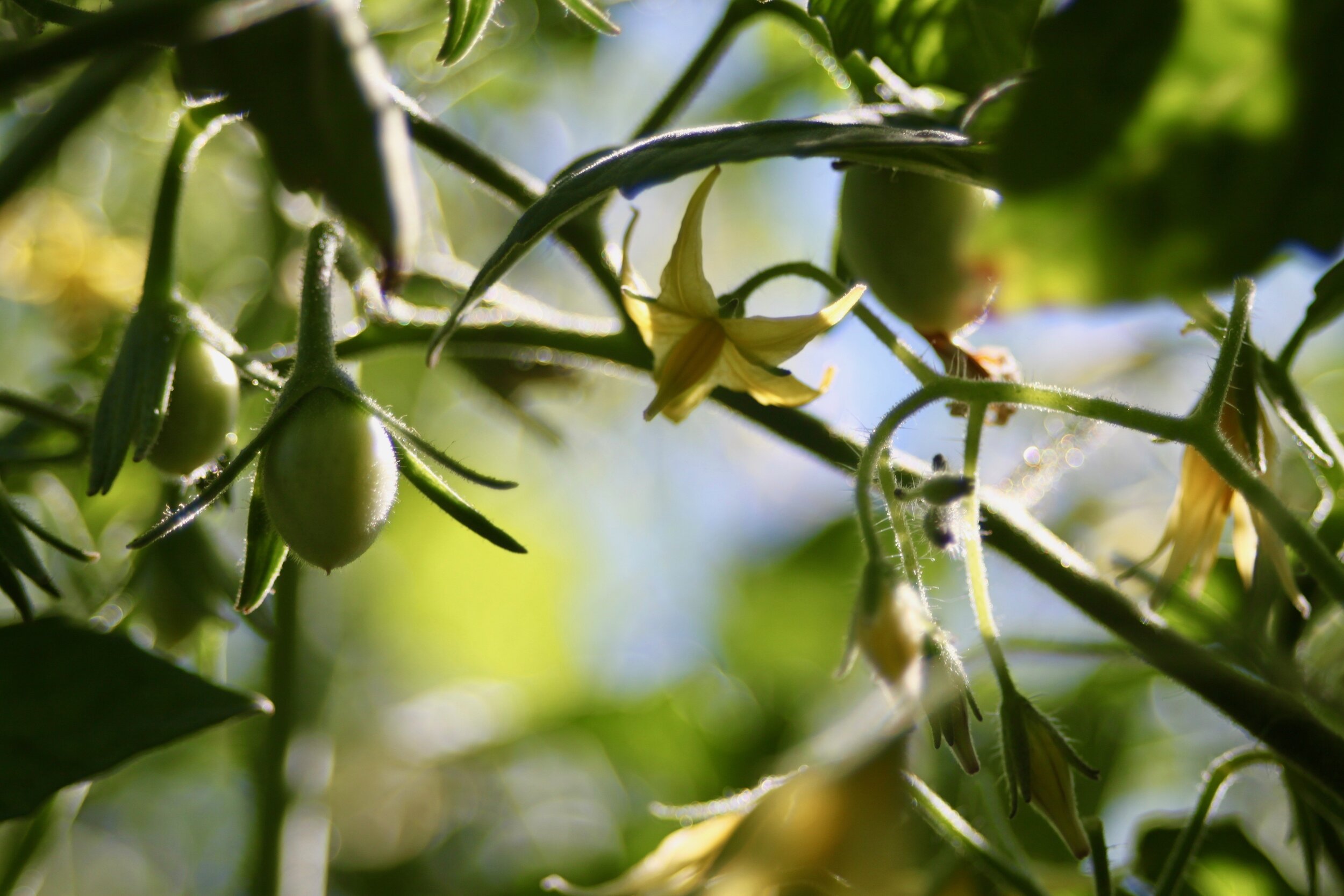Hungry Hollow Tomatoes are Back!
The calendar and our crops agree: it’s officially summertime!
Our watermelon are looking just about ready for harvest, and the tomatoes have been ripe for picking for a few weeks now.
Starting at the bottom of the vine the tomatoes ripen slowly, showing one, two, three colorful tomatoes at a time until the whole cluster colors up. Each variety matures at it’s own pace with some showing their color before others. We wait until there are enough fully ripened fruit on enough varieties within a planting before starting in on harvest, but if we wait too long then the harvesting crews have to spend more time sorting and avoiding the fruits that have already become overripe.
Before harvest, a lot of work goes into getting the plants established and growing. Some of the many tasks include transplanting, cultivating, staking and tying, all of which you can watch in this video from our farm showing how we plant and cultivate cherry tomatoes up until harvest:
Our last planting of tomatoes just went in the ground, and while we watch their progress, we are also keeping a close eye on our other crops, namely the watermelon, melons, and winter squash. All are setting fruit and looking pretty good. We anticipate watermelon harvest to begin any day now.
This time of the season, with so many crops growing, it’s important for us to be monitoring and scouting our fields to catch potential problems before they become, well, big problems. The biggest pest we’ve been dealing with this year (so far) has been the Western Flower Thrips (not to be outdone by the Darkling beetle – more on that in a moment). The thrips feed on flowers, developing buds, fruits, and foliage. Larvae and adults have rasping mouthparts that they use to rupture plant surfaces and feed on the juices. Not only do these tiny insects cause cosmetic damage by feeding on flowers and developing fruits of crops like snap peas and tomatoes, but thrips are also vectors for certain viruses, which we have seen showing up in our fields.
Once a thrip feeds on an infected plant, it carries the virus with them throughout the rest of their life, spreading disease to all its future foliage feasts. For that reason, and because these viruses have no treatments, we’ve been putting effort towards removing diseased plants from the field while experimenting with applying different oils to the healthy plants to try to lower the population of thrips and get the spread under control.
Now, the darkling beetle is another story. This pest has been showing up in the last few weeks, most notably in our winter squash fields. Darkling is a group of ground beetles that do their damage by feeding on plants just under the soil level, sometimes completely girdling and cutting off the plant at the base (especially young, tender plants), which can potentially wipe out a significant amount of a crop in a short amount of time if not caught early enough. Because of these beetles, we had to replant some of our winter squash, while setting bait out behind the seeder this time.
Now we have our antennae tuned in for the beetles and are also keeping watch out for the armyworms we know are soon to invade. Just like the plants and the weather, pest infestations can also be seasonal. Perhaps our next series of farm videos will have to showcase the farm pests!
We hope you enjoyed the tomato video shared here – the next to come will be all about how we harvest and pack tomatoes at Durst Organic Growers. We plan to put more videos together to show how our crops get to and from our fields to your markets. We hope they give you a good sense of the farm, and offer a small bit of the story behind your produce.
Current "favorite" Recipe (can you really have a favorite?):
This grain salad is the perfect lunch (or dinner) for a hot day. Deborah made a big batch of it, which she shared, of course, and it was so delightfully refreshing we thought it the perfect quick recipe to share here, with you, too! She tweaked the fixin's (see note below) to suit her preferences and pantry, as always, but this is the basic outline. How would you change it to suit your tastes?
Grain Salad Featuring Cherry Tomatoes and Herbs
1cup quinoa or bulgar
juice of 2 lemons
several "glugs" of olive oil (about 1/4 cup)
1 bunch of scallions, thinly sliced, green parts included
1-2 bunches of mint, chopped (about 1 cup)
1-2 bunches of flat-leaf parsley, chopped (don't be afraid to use the tender stems, too!)
1 cucumber, seeded, roughly diced
2 pints cherry tomatoes, halved
2 cups crumbled or diced feta
Cook quinoa according to package directions (or: bring a pot of water to a boil, salt the water, add quinoa, lower heat and simmer, covered, until the grains are tender - about 15 minutes). Drain and place in a large bowl, immediately adding the lemon juice, olive oil, and salt to taste
Add the rest of the ingredients, up to the feta, and toss together until evenly distributed with the quinoa. Gently fold in the feta, taste for seasonings, and add more salt, pepper, or lemon juice if needed.
Serve at room temperature, or refrigerate and serve cold.
*note: Deborah omitted the feta, and used apple cider vinegar instead of lemon juice (because that's what she had on hand). We suggest using 1-2 bunches of fresh herbs depending on your own taste preferencesPlay around with the ratios (More cucumber? More tomato? How about some red onion instead of scallion? Pickled red onion? Half vinegar, half lemon juice?) and see how you like it!
As always, you can see what we've been cooking up by visiting our website's Recipes Page (and social pages, linked below).
What's new on your plate?

